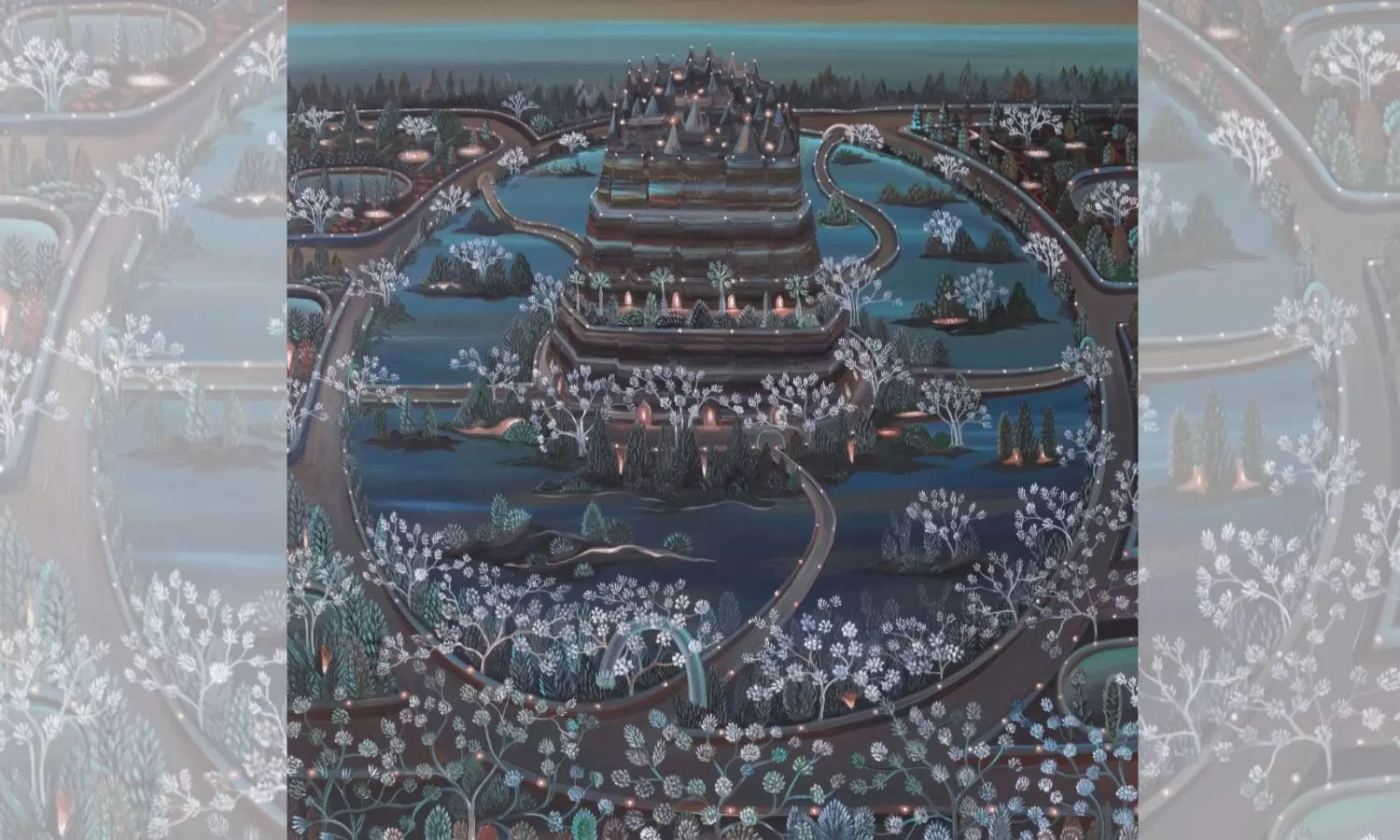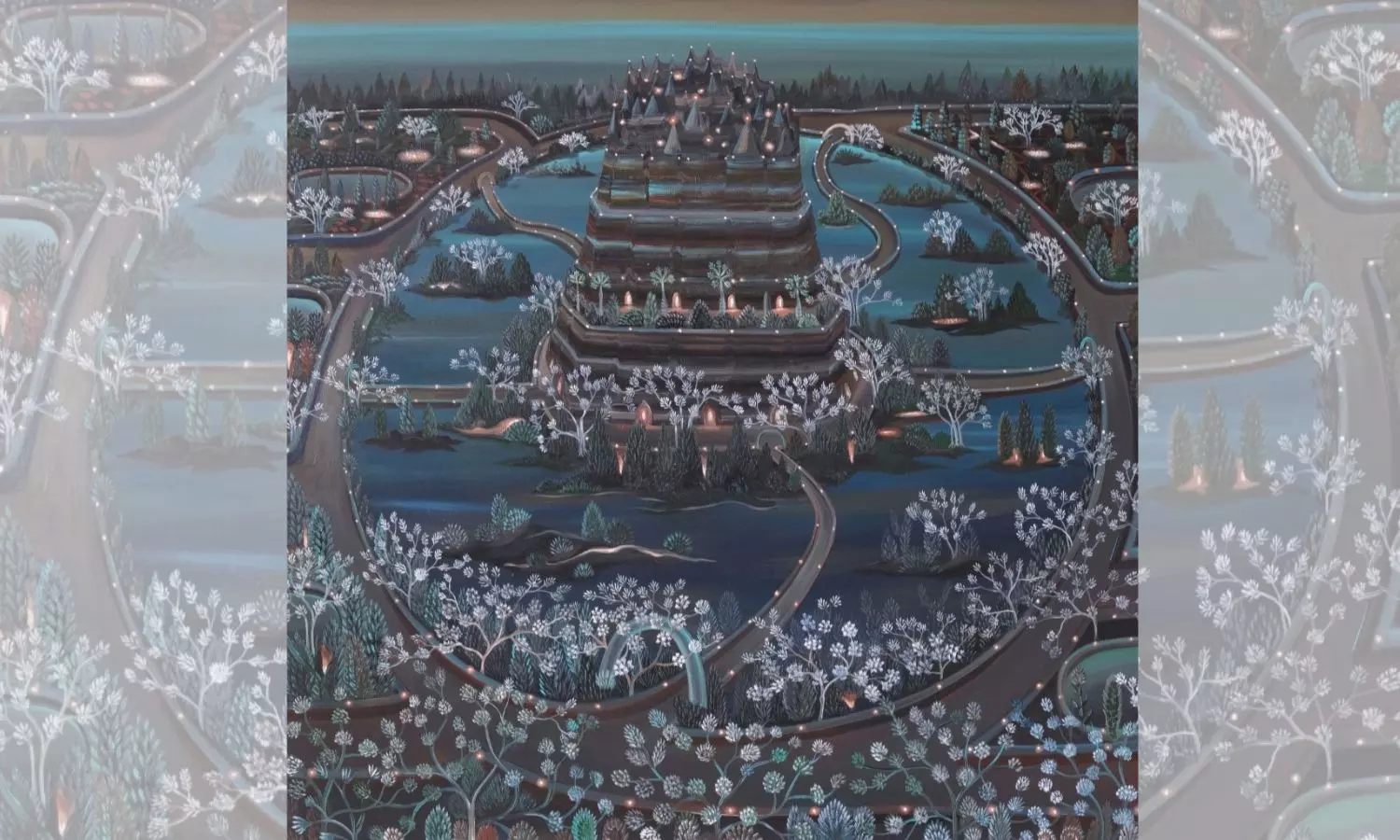
Hyderabad: The Quorum’s “Art Quotient” program has collaborated with Hyderabad’s Kalakriti Art Gallery for an exhibition titled “Nature Reimagined”. Curated by Amit Kumar Jain, The Quorum’s Head of Art Program, this exhibit features seven Indian artists exploring nature’s calm and captivating world. The exhibit features works by Dushyant Patel, Balaji Ponna, Manas Naskar, Manisha Agarwal, Om Soorya, Priyanka Aelay, and SN Sujith. Each artist offers a unique perspective on changing seasons, forest life cycles, and its fading inhabitants.
Talking about the collaboration, Rekha, the co-founder of Kalakriti Gallery, said, “Amit is known in the art circle. So, we were very comfortable doing it together. And this is one of the starting of the collaborations that will go a long way.”
The exhibition aligns with Quorum’s vision of becoming a cultural hub. It’s not just about reimagining nature, but also our lives and social interactions. While Quorum is members-only, the art program maintains flexibility to encourage accessibility. Future plans include studio visits, allowing members to engage more deeply with artists and their work. The exhibition runs until September 25, providing ample time for member engagement.
The diverse range of artists and styles in “Nature Reimagined” ensures something for everyone, from art enthusiasts to newcomers. The nature theme resonates universally, making it ideal for introducing people to art collecting. The works celebrate natural beauty and prompt reflection on our environmental relationship, potentially inspiring conversations about sustainability.
The piece by senior artist Om Soorya portrays nature through luminous images of plants and animals. His southern background influences his landscapes.
Another exhibit is by Manas Naskar, who has spent a lot of time in Shantiniketan. He uses charcoal and pen on paper, layering charcoal and adding details with a pen. He’s reimagined nature in his own way. Few artists master charcoal like Manas. Interestingly, his works depict lush green scenes, suggesting greens turning to greys. The artist mixes charcoal powder and crayon.
“We have chosen artists who excel in their craft and bring unique views on nature. From Om Soorya’s bright images to Manas Naskar’s detailed charcoal works, each piece offers a different view of our natural world,” says Amit Kumar Jain.
Manisha Agarwal’s work explores how nature and humanity coexist in our changing world. She uses a unique stamp-like format, which is intriguing. This theme runs through all her pieces. Indian stamps often show historical or obsolete items, perhaps suggesting that nature might become something we only remember through such representations.
The jar concept is reminiscent of ‘memory jars’ filled with meaningful objects, perhaps depicting Manisha’s childhood experiences of collecting butterflies. Memories because we might not see these animals and birds in the future, like the endangered tiger in one of the paintings.
While it is a wake-up call, the artist presents it beautifully and colorfully. It is a serious message conveyed subtly, raising awareness without causing distress. Among all the paintings, only one features some trash, cleverly integrated with the flowers. Some might even see these colorful, trash-like elements as part of the landscape. The painting titled “Vanishing” features a stamp suggesting migration or transition.
Dushyant Patel, a Baroda-based artist, focuses on elephants in his work. He aims to highlight how endangered animals, particularly elephants, are affected by human activities. His approach is quirky, incorporating elements like lotuses and other natural features alongside the elephants.
The show also exhibits works of local artist Priyanka Aelay, who holds a PhD from the Museum of Culture of India. She says her research focused on Bala Nagamma, a nearly forgotten South Indian folk story. Bala Nagamma revolves around the story of a woman, both mother and wife, waiting for rescue. It’s similar to Ramayana episodes. “I enjoy depicting flora and fauna, which has become intricate in my art. Over 14-15 years, my style shifted from abstract to detailed work, influenced by folk story research,” she says.
Priyanka’s work beautifully blends traditional storytelling with contemporary interpretation. By reimagining ancient tales through a modern lens, she offers fresh perspectives on timeless themes, preserving cultural heritage while making it relevant to today’s audience.
The parallel universe concept in her folk tale interpretations is thought-provoking. It challenges traditional narratives and reflects the complexities of human relationships and choices.
The blue-green palette in her reflects her environmental concerns and love for nature. Priyanka’s artistic journey is remarkable. Starting with abstract art and evolving through various styles shows her willingness to experiment and grow. This evolution mirrors her personal growth, demonstrating how life experiences shape an artist’s work.
Her layering technique creates a richness of color and texture, giving her paintings unique depth. This method, combined with her art history background and internship experiences, contributes to her distinctive style.
Priyanka’s work, while rooted in Indian artistic traditions, has a contemporary feel. This blend makes her art accessible to a wide range of viewers.
Her focus on environmental themes is timely and relevant. By using art to comment on current issues, Priyanka joins artists who raise awareness and inspire change.
The exhibition, from Dushyant’s elephant painting to Priyanka’s work, tells a story about our relationship with nature. It subtly encourages viewers to think about important issues.
The exhibition will make you see nature – and your surroundings – in a new way. Art interpretation is personal—where each viewer brings their own experiences, leading to diverse understandings of the same piece. This diversity of interpretation makes art powerful and engaging.
Each piece at ‘Nature Reimagined’ at The Quorum is a window into the artist’s thoughts, experiences, and cultural heritage. They offer a unique chance to see the world through someone else’s eyes.
As Hyderabad’s art scene evolves, exhibitions like this play a crucial role in its growth. They provide a platform for artists and cultivate new art enthusiasts and collectors, potentially impacting the local art market and community.
The artists featured offer unique perspectives on nature and our relationship with it. Their works reflect our changing world and our place within it. They challenge us to think differently about nature, conservation, and our role in shaping the environment.
As we face issues like climate change, habitat loss, and species extinction, art can raise awareness and inspire action. These paintings celebrate nature’s beauty and call us to protect it.
